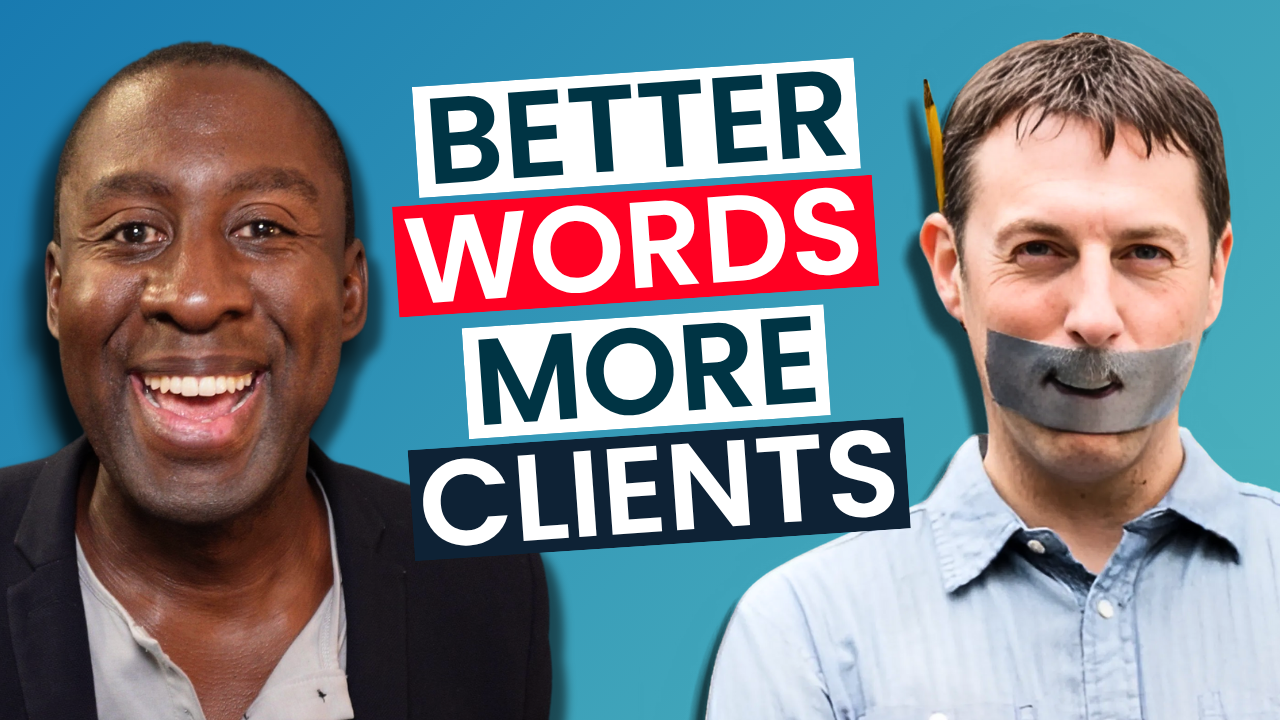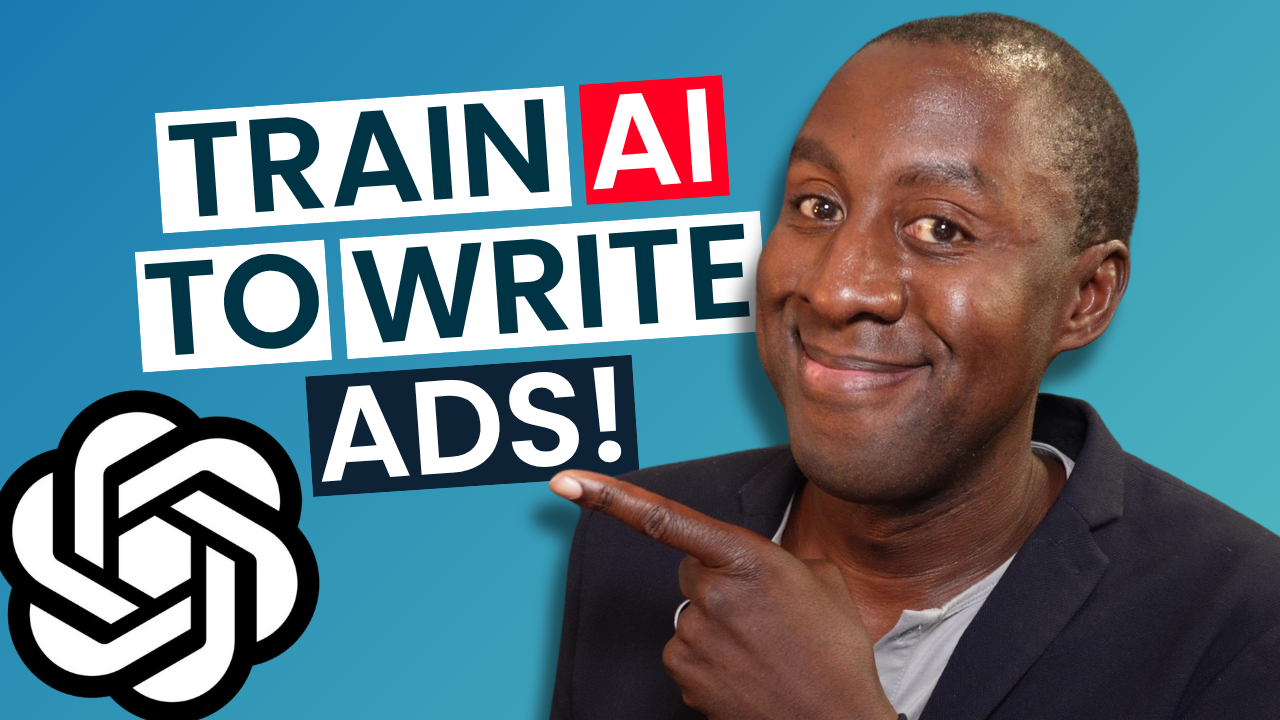Considering putting your Meta pixel on someone else’s website? No Bueno. Don’t!
While the idea might seem good so you can target more people with your ads….
Actually it can mess up your ad performance. We’ll explain why, and what you should do instead.
- Cut your lead gen costs in HALF with my $37 mini-course–NOW only $17!
- Visit The Art of Online Business website for Facebook Ads help
Please click here to give an honest Rating/Review for the show on iTunes! Thanks for your support!
Kwadwo [QUĀY.jo] Sampany-Kessie’s Links:
- Get 1:1 Meta Ads Coaching from Kwadwo!
- Say hi to Kwadwo on Instagram
- Subscribe to The Art of Online Business’s YouTube Channel
Jamie Sampany-Kessie’s Links:
- Say hi to Jamie on Instagram
Speaker 1:
Welcome back to another episode of the Art of Online Business podcast. I’m joined by Jamie, my lovely wife. Hello.
Speaker 1:
And today we’re going to talk about something that happened this week the week I’m recording which is I found a client had a pixel, a Facebook, a meta pixel on somebody else’s website, and when I discovered that this website traffic was coming in, I was a bit worried. And you know I was worried because ads were not performing as they should be performing. And so in this episode we’re gonna dive into should you be putting your pixel on somebody else’s website, cause I can see the gain, I can see why it would be tempting to do so but, I’m gonna tell you and you can ask me questions and you, the listener, can benefit from this because I’m sure you’ve wondered what if I just team up with somebody with a similar audience.
Speaker 1:
Throw my pixel over there.
Speaker 3:
Right, it kind of makes sense, right, I’m collaborating with this other person where our businesses are aligned and we’re going to do this thing together. But why would someone do it? What’s to gain from putting a pixel your pixel on someone else’s website?
Speaker 1:
Well, I think first of all, we should say just quickly what the Metapixel is, in case somebody I know you probably know what the Metapixel is, but somebody else might be listening to who doesn’t know what the Metapixel is. I would super appreciate it if you leave a review on Apple podcast, because it lets me know that I’m doing a good job, hurry. But it also makes the algorithm show this episode to more people who need the help. So the Metapixel is this snippet of code that goes on a website and it collects. What does it collect? Jamie collects data. It collects data specifically. What kind of data?
Speaker 3:
all of the like link people who are coming to the website, who are clicking on your stuff.
Speaker 1:
It’s really cool because what it allows Meta to understand is who is interested in your business, what kind of people are entering your business ecosphere?
Speaker 1:
So, you want the pixel everywhere right now, after you listen to this episode, even if you’re not planning on running meta ads soon to Facebook and Instagram. Get the pixel there so that, once you are ready to run ads, the algorithm can work better on your behalf, finding the best people for your business. And that’s the point, jamie is. I’m running ads for a client and they’re acting like erratically and I find out the pixel’s on somebody else’s website. I ask about it and my client says, yes, we did collaborate together. I was hoping there was just a mistake, but you know. But. But the client responds yes, we did collaborate together with so-and-so and the pixel was on their website.
Speaker 3:
I’m like, oh, so what happened then? Because, yeah, I noticed you were saying all week like this is just not working hurt.
Speaker 1:
It’s like the ads could not decide what to do, so like there would be leads someday, no leads the next day, high lead cost one day and usually high lead cost the next day. Like it was just the ads couldn’t make up their mind. And I’m like going through all of my Facebook ad manager tricks and very few of my ad manager tricks are working. And so I see why somebody would want to put a pixel. More traffic right, More people to retarget.
Speaker 1:
But, here’s the thing that when I talked to my client became clear that maybe my client didn’t realize and I’m being gender neutral so that I don’t accidentally give away the client’s identity, cause you know confidentiality and all that stuff which all my clients have but when you put a pixel on somebody else’s website even if, like in my client’s case, it was they were collaborating with another person who had a similar business and they had gone in together on a bundle right? And so then other online you know, know, coaches and course creators and folks that serve the online course creator niche we’re driving traffic to that bundle bundle and so both my clients email list and the collab partners email list were growing. But the thing is, is not all of the people who went to the website were best fit folks for my clients’s business? It’s not like they were going to the website to even get a lead magnet that only my client had made. It was a joint venture bundle to grow the email list. It’s fine to grow your email list because you can market right. Mm-hmm.
Speaker 3:
But not all leads are good. Leads are quality leads.
Speaker 1:
Yeah, right, yeah.
Speaker 3:
So did this person already get the pixel on the other person’s website Before said client started working with you? Yeah, okay, and was it a new? Was it a new ads account or have this person already been running ads before? They’ve been running ads, okay.
Speaker 1:
And so what we had to decide, what we realized, is that, basically, the pixel was confused if you will it had. Oh, and the other interesting tidbit was this other website that the client’s pixel was on Happened to have beginning a lot of traffic to this bundle, maybe two To three times the amount of traffic that my own clients website was getting mm-hmm.
Speaker 1:
So my clients pixel was getting more information about an audience from a different business and even a mix of a bunch of other different businesses, because other folks who are partnering on this were driving traffic to it too. And so we had to make a hard decision, which was in launch season, like as a launch is starting. We had to, we had to get rid of the old pixel and Start with a fresh pixel, and it was a tough decision, like old pixel that’s confused and not performing better. And it was a tough decision like old pixel that’s confused and not performing better, but with only like a couple weeks to go until the webinar starts. You know, during launch, do we try a new pixel and which would work better, the old, confused pixel with tons of data, or the new pixel with not so much Data? And so we did it. Yeah, it’s so. It was a tough call. Which one did you end up choosing? We did it, yeah.
Speaker 3:
So it was a tough call. Which one did you end up choosing? Well, we went with the new Pixel.
Speaker 1:
You went with the new Pixel Because, long term, the new Pixel will be better and, of course, like the old one, wasn’t working.
Speaker 1:
Right very well and so it’s like, well, let’s risk it and go with the new Pixel because it could work really, really great In the story. It didn’t work super well, it’s working okay. And so we ended up needing to target audiences that weren’t as dependent on the pixel. So we targeted like an email list lookalike. We uploaded that and made sure to target those folks and we really leaned heavily on targeting the warm audiences because, although it was a new pixel, the warm audience of people who are already on the email list, you know who already were watching some of my clients’ videos those ones are good to go.
Speaker 3:
Right, they should naturally perform better, yeah.
Speaker 1:
So a lot of folks don’t realize that, even though the pixel helps you retarget somebody that’s entered your business ecosphere, and even if you’re targeting an audience that, for example, a cold audience that’s built off of a warm audience like an email list, you would think, if I upload my email list of 2000 people to Meta and Meta gives me an audience of 2 million, does it even matter if I have, like a confused pixel?
Speaker 1:
And the thing is it does, because you would say, well, meta is looking at the email list and giving me a bigger audience of people who are similar to that email list and giving me a bigger audience of people who are similar to that email list. So the pixel is not really influencing who I’m targeting, but it is because Meta records 52, like has 52,000 data points, right, and so that pixel then is still optimizing on what it thinks are the ideal people in your business ecosphere, is still optimizing on what it thinks are the ideal people in your business ecosphere and it’s still influencing who within this cold audience is it like going to look for, you know, and so it really it really does matter. What was your question?
Speaker 3:
right. So when someone something interesting that you had mentioned before was that even if you are not running ads yet, it would be a prudent move to still put the pixel on your website to begin tracking the information, the data, because when you do want to start running ads then usually it takes for a new account. Especially, it takes two to three weeks, right, For the algorithm to start kind of working properly or in your favor. So it would be who of you correct to already get that pixel on there.
Speaker 1:
And to start ads a little sooner than you need. It’s a different topic for a different episode. But starting ads four weeks before your launch, starting lead magnet ads just before launch not the best way to go and then hoping that those leads you can convert into launch registrants and then they’re going to sign up. What were you learning about the length of time that somebody is on your email list for optimal purchases?
Speaker 3:
Oh right, yeah, we just talked with a launch strategist and it was interesting. She noticed that the trend was that people who would buy the higher percentage of people who would buy are people who have been on your email list from zero to three months, and generally even more, in like the two month or so mark, two month or so mark, and then later at a 12 month or more range, and so those were the people that were more likely to buy, which kind of makes sense, right? That someone who’s new, who’s fresh, who’s kind of like excited about your content, and then someone maybe who’s been with you for a long time and now they’re finally ready to buy. All those people kind of in the middle. They found lower percentages that they would buy during the launch, and so it would make more sense to continue to run your lead magnet for a longer time before your launch. Get those people on your email list, get those people in your ecosphere, start nurturing them, you know. Start giving them you know the tidbits the good stuff, and then later they’re more likely to buy from you the good stuff, and then later they’re more likely to buy from you.
Speaker 3:
So the key takeaway here is that if you have a launch coming up maybe in. You know, we’re in October, right now, the end of this month, november don’t wait. If you’re thinking about hiring an ads manager, don’t wait until oh, I’m just going to hire this person right before my launch. Like the you know, the pixel, the algorithms needs time to, you know, to find those right people who are your ideal audience, so you can get those quality leads that are going to start coming into your, your business ecosphere and even get on your email list. And even right now, you can start and get those people that are going to be on there for you know that one, two, three months mark, and those are people that are also really have a high likelihood of buying from you.
Speaker 1:
There you go.
Speaker 3:
Mm-hmm.
Speaker 1:
Well, thanks for listening to this episode, jamie. I appreciate you being on here with me. Yeah, by the way, if you don’t know, jamie is an ad manager alongside of me in the business. She’s been managing ads for clients now for about what? Six months Give or take, a month or so, five months, and it’s really cool.
Speaker 1:
She adds a fresh perspective. Sometimes, because I’ve been doing ads for so long, I kind of suffer from knowledge bias and don’t think to ask like the questions that are really on your mind, the listener. So please leave a review that link is in the show notes below. And until the next time we see you or you hear from us, be blessed.
![[QUĀY.jo]](https://theartofonlinebusiness.com/wp-content/uploads/2023/10/AOOB-Logo-White-150x118.png)





